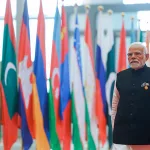The single constant in human history is the development of urban cities across the globe. While some cities are more developed than others some have not even started the road towards their development. Out of the various explanations that economists have provided for the unequal development of the world, the recent and severely underpinned explanation was provided by Acemoglu and Robinson in their best-selling book, ‘Why Nations Fail.’ The earlier economists had put forward the explanations of geography and climate for unequal development of the world, Acemoglu and Robinson compared many neighbouring countries with the same geography and resources and put forward the role of institutions in the development of countries, making it evident that the starting point of development anywhere in the world is the role of different involved institutions.
For centuries, economists have been grappling with the puzzle of unequal development and well-being across the globe. There is no one-size-fits-all policy for countries to achieve development. Policies must be customized to the specific location and circumstances at hand. We cannot simply replicate the models of countries like the United States or China in any other context, nor can we replicate the developed city of London in any major city in India.
As a student of innovation policy and economic development, I have had the opportunity to study development in various contexts worldwide. This has exposed me to the diverse socio-political factors that drive innovation and, ultimately, economic progress in different places. Growing up in Kashmir has made me acutely aware of the unique social, cultural, and political characteristics that set it apart from other regions. This realization became even more evident when I recently settled in the United Kingdom for my postgraduate studies. Observing British behaviour, culture, and mindset, I came to understand that institutions alone cannot foster growth anywhere in the world.
The dynamics of development involve a wide range of actors and networks. One such actor is the perception of people related to innovation and economic development. When Chris Freeman, the founder of the Science Policy Research Unit at the University of Sussex contributed to the theory of the national innovation system, he highlighted the role of contexts for the innovation policy and adjacent to that, he also highlighted the role of cultures which breed innovation in a particular geography. Hence, different places around the world have different cultures which either support innovation or discourage it.
Similarly, the pioneering work on innovation and economic development by Joseph Schumpeter referred to innovation as a central force in economic transformation. Much of his scholarly work has focused on how innovation drives economic evolution and the critical role that innovators and entrepreneurs play in the process. Innovation according to Schumpeter is the creation of new combinations that represent a departure from established practices. He noted that resistance to innovation is experienced by the innovator, businesses and the wider economy. Innovation thus does not happen in isolation its very nature requires transformation and adoption of new cultures and abandonment of the long-held practices.
When discussing the academic institutions in Kashmir, which are expected to foster creativity, there is often mention of non-creative environments. This means that the academic ecosystem in Kashmir generally lacks an environment that supports new ideas. Individuals with innovative ideas are often met with discouragement, hearing phrases like “This won’t work,” “This is insignificant,” or “Don’t waste your time.” The disregard for new ideas has become so prevalent that students have stopped considering alternative approaches, remaining stuck in the traditional learning process that relies on outdated syllabi.
In today’s world, when innovation is regarded as the holy grail of economic development, Kashmir needs to re-evaluate its educational and professional practices. With thriving sectors like tourism, agriculture, and Edu-tech, Kashmir has immense innovation potential. While we cannot replicate the practices of a city like London, we can leverage our resources, both human and material, to achieve inclusive and sustainable economic development in the region. This requires fostering collaborations and synergies between institutions and individuals. However, before that can happen, people’s perception of change needs to be embraced. To cultivate a culture of innovation, all members of society must be open to change and willing to let go of old practices and work cultures.
(Author is M.Sc. Candidate at SPRU-Science Policy Research Unit, University of Sussex. Feedback: [email protected])




